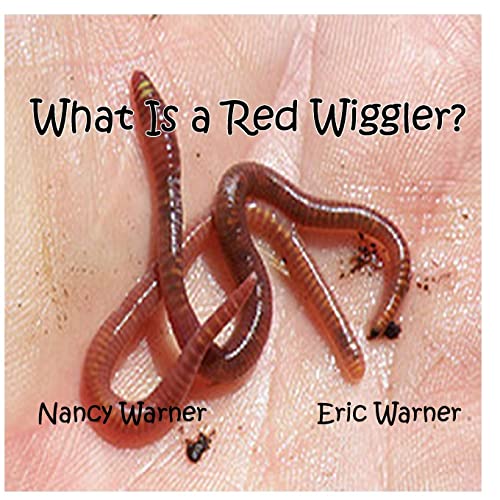Maximize Lawn Growth with Effective Products from Red Wiggler Express
Maximize Lawn Growth with Effective Products from Red Wiggler Express
Blog Article
Red Wigglers: The Unsung Heroes of Organic Waste Recycling
Red wigglers, or Eisenia fetida, offer as vital representatives in the organic waste reusing process, transforming discarded materials right into valuable vermicompost. As the globe significantly seeks solutions to deal with waste buildup and boost farming productivity, understanding the role of these worms comes to be important.
What Are Red Wigglers?
The remarkable durability of red wigglers, clinically called Eisenia fetida, emphasizes their crucial role in organic waste recycling. These little, reddish-brown earthworms are normally located in decaying raw material, such as compost piles and manure heaps. Lake Hickory Bait. Unlike various other earthworm species, red wigglers grow in nutrient-rich settings and are extremely reliable at damaging down natural products, making them vital for vermicomposting

(Red Wiggler Express)In addition to their role in waste reduction, red wigglers add to dirt health by improving soil structure and aeration with their burrowing activities (Lake Hickory Bait). Their visibility in composting systems not only improves decomposition rates but additionally promotes a sustainable technique to squander administration, illustrating their relevance in environmental preservation efforts
Advantages of Composting With Worms
Composting with worms, especially red wigglers, supplies numerous advantages that enhance both waste monitoring and dirt wellness. Initially, these worms effectively break down organic waste, transforming it into nutrient-rich vermicompost that enriches dirt. This process accelerates decay, enabling for a quicker recycling of cooking area scraps and other natural materials contrasted to typical composting approaches.
In addition, the vermicompost created by red wigglers is including beneficial bacteria, which assist improve dirt framework, aeration, and dampness retention. This improves the general health and wellness of plants, promoting vigorous development and enhanced returns in yards and farming setups. The usage of worms in composting minimizes the production of greenhouse gases, such as methane, contributing to an extra sustainable waste monitoring system.

Just How to Start Vermicomposting
Establishing a vermicomposting system is a straightforward procedure that can yield considerable benefits for both waste management and soil enrichment. To begin, choose an appropriate container, such as a plastic bin or wooden box, with adequate air flow holes to make certain appropriate airflow. The dimensions ought to ideally be about 2 feet by 3 feet, permitting sufficient space for the worms to prosper.
Next, prepare bedding product, which can include shredded newspaper, cardboard, or coconut coir. This bed linens needs to be moistened to develop an ideal habitat for the worms. As soon as the bedding remains in area, present red wigglers (Eisenia fetida) right into the bin, commonly around one pound of worms for every square foot of surface.
Adhering to the positioning of worms, add natural waste, such as vegetables and fruit scraps, coffee grounds, and smashed eggshells. Stay clear of including milk, meat, or oils, as these can create smells and attract bugs. Finally, place the container in a shaded, temperature-controlled area to maintain optimal problems for worm activity. With these steps, you will efficiently initiate a vermicomposting system that adds to sustainable waste management and enriches your soil.
Preserving a Healthy And Balanced Worm Container
(Red Wiggler Express)Keeping a worm container growing needs normal focus and like make certain the health and wellness of the red wigglers and the effectiveness of the composting process. Correct maintenance begins with monitoring the wetness levels; the bin must be moist but not waterlogged. A great guideline is to keep a consistency similar to a wrung-out sponge.
Carefully blending the bed linens and food scraps every few weeks protects against compaction and makes certain that all worms have access to oxygen. Additionally, it is crucial to feed the worms appropriately.
If the container comes to be also warm or cool, the worms may end up being stressed out. By vigilantly managing these aspects, one can keep a robust and productive worm bin.
Impact on Lasting Living
The successful upkeep of a worm container not only benefits the health and wellness of red wigglers however additionally adds considerably to sustainable living techniques. By recycling natural waste, such as kitchen area scraps and backyard debris, red wigglers aid draw away substantial quantities of product from landfills. This reduction in waste not just decreases greenhouse gas exhausts however additionally decreases Red Wiggler Express the ecological concern connected with waste monitoring.
In addition, the castings created by red wigglers work as a nutrient-rich natural plant food, boosting dirt health and wellness and advertising plant growth. This all-natural option to chemical plant foods supports lasting agriculture and horticulture methods, decreasing reliance on artificial inputs that can hurt environments. Additionally, worm composting promotes recognition of waste management, encouraging individuals and areas to embrace more lasting behaviors.

Conclusion
In recap, red wigglers offer as vital factors to natural waste recycling through their effective decay of organic materials. By incorporating vermicomposting into waste monitoring strategies, people and communities can significantly decrease waste while advertising ecological sustainability.
Report this page